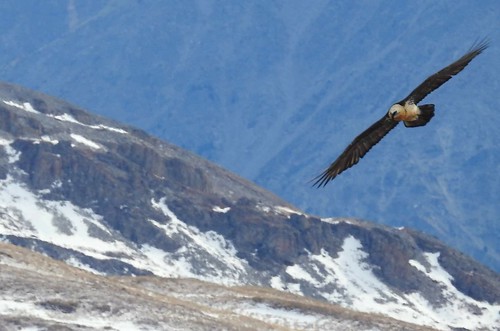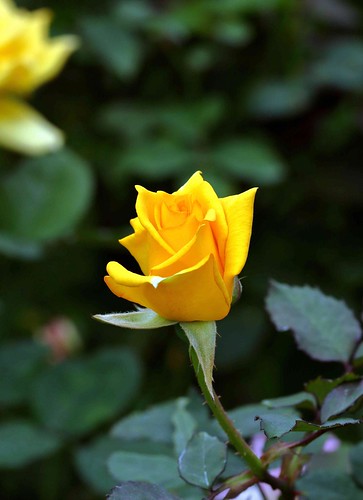Ated information of these resources. Seventeen databases have already been discovered which are classified according to the information variety (Supplementary, Table S) and briefly described as under.Taxonomydistribution associated databasesProper identification, classification, MRK-016 site taxonomy, distribution and geographical details of species would be the foremost factors for biology, genetics, molecular research, etc. Databases consisting of such data play a pivotal part in exploring, identifying and classifying species. The two such primary databases are `Database of Insects and their Meals Plants’ (DBIF) and `Database of Butterflies and Moth on the World’ (DBMW). `DBIF’ has been developed by Biological Investigation Centre (BRC), England as  the main part of UNC1079 web National Biodiversity Network (NBN). It’s a database of invertebrates (like insects, silkworms) and their host plants with 3 search options- `Search invertebrates’, `Search host plants’ and `Search source’. Interactions for members of distinctive households of Lepidoptera (butterfly households, macro moth households and micro moth families) are provided by this database. The output is displayed in a tabular format for the selected search and can be accessed by way of http:brc.ac.ukdbifhomepage.aspx. `DBMW’ however, was developed by Organic History Museum (NHM), UK which catalogues around generic names of world’s lepidopteran insects (butterflies and moths, such as wild silkmoths). Information and facts of around , and members of three households: Bombycidae, Saturniidae and Sphingidae is usually retrieved from the database. The information is often searched or browsed through loved ones, genus, species, classification or pictures and accessible at URL: http:nhm.ac.ukour-science databutmoth. In addition to the above information resources, handful of other databases describing the morphological, ecological, taxonomical information of diverse live types are available. These include: `Common Names of Insects Databases’ (CNIDB; http: entsoc.orgpubscommon_names), `Moths of Borneo’ (http:mothsofborneo) below HostParasite database (http:nhm.ac.ukresearch-cur ationscientific-resourcestaxonomy-systematicshost-paraBarcode databasesBarcodes are brief DNA sequences serving as signatures for the identification and classification of species, PubMed ID:http://www.ncbi.nlm.nih.gov/pubmed/25240456?dopt=Abstract approach called as DNA barcoding`BOLD’ (The Barcode of Life Information Program) is 1 such user-friendly information resource created by Consortium for the Barcode of Life (CBOL) to enable collection, storage, evaluation and publication of DNA barcode sequences by amassing distributional, morphological and molecular informationAround specimen records of lepidopteran insects such as , and members of Saturniidae, Sphingidae and Bombycidae households, respectively, are provided by BOLD (March). Also, plants and fungi specimen records are out there within this database. The information may be accessed by means of 4 most important sections: (i) public information portal, (ii) a database of barcode clusters, (iii) a data collection workbench and (iv) an educational portal. Given that past couple of years, BOLD has turn into a prospective and central online platform for the researchers working in DNA barcoding fields. It has diverse information files which can be downloaded in different formats like Specimen data as XML or TSV, sequences as FASTA, Trace files as .ab or .scf and specimen detailssequences as XML or TSV formats. All crucial functions like data uploaddownload, public query, cross-referencing, user registration, enable and analytical tools (Distribution Map Analysis, Taxon ID Tree, Distance Su.Ated information and facts of these sources. Seventeen databases have already been located that are classified according to the data form (Supplementary, Table S) and briefly described as under.Taxonomydistribution associated databasesProper identification, classification, taxonomy, distribution and geographical data of species are the foremost things for biology, genetics, molecular research, and so on. Databases consisting of such details play a pivotal function in exploring, identifying and classifying species. The two such principal databases are `Database of Insects and their Meals Plants’ (DBIF) and `Database of Butterflies and Moth from the World’ (DBMW). `DBIF’ has been developed by Biological Analysis Centre (BRC), England because the principal part of National Biodiversity Network (NBN). It can be a database of invertebrates (such as insects, silkworms) and their host plants with 3 search options- `Search invertebrates’, `Search host plants’ and `Search source’. Interactions for members of distinct households of Lepidoptera (butterfly families, macro moth families and micro moth households) are supplied by this database. The output is displayed inside a tabular format for the chosen search and may be accessed via http:brc.ac.ukdbifhomepage.aspx. `DBMW’ alternatively, was created by All-natural History Museum (NHM), UK which catalogues about generic names of world’s lepidopteran insects (butterflies and moths, such as wild silkmoths). Info of about , and members of three families: Bombycidae, Saturniidae and Sphingidae is often retrieved from the database. The information may be searched or browsed by means of household, genus, species, classification or pictures and accessible at URL: http:nhm.ac.ukour-science databutmoth. Along with the above data sources, handful of other databases describing the morphological, ecological, taxonomical data of diverse reside forms are available. These include: `Common Names of Insects Databases’ (CNIDB; http: entsoc.orgpubscommon_names), `Moths of Borneo’ (http:mothsofborneo) under HostParasite database (http:nhm.ac.ukresearch-cur ationscientific-resourcestaxonomy-systematicshost-paraBarcode databasesBarcodes are brief DNA sequences serving as signatures for the identification and classification of species, PubMed ID:http://www.ncbi.nlm.nih.gov/pubmed/25240456?dopt=Abstract approach called as DNA barcoding`BOLD’ (The Barcode of Life Data Method) is a single such user-friendly data resource created by Consortium for the Barcode of Life (CBOL) to enable collection, storage, evaluation and publication of DNA barcode sequences by amassing distributional, morphological and molecular informationAround specimen records of lepidopteran insects like , and members of Saturniidae, Sphingidae and Bombycidae families, respectively, are supplied by BOLD (March). Also, plants and fungi specimen records are accessible within this database. The information is often accessed by way of 4 major sections: (i) public data portal, (ii) a database of barcode clusters, (iii) a information collection workbench and (iv) an educational portal. Because previous couple of years, BOLD has develop into a prospective and central on line platform for the researchers functioning in DNA barcoding fields. It has diverse data files which is often downloaded in various formats like Specimen data as XML or TSV,
the main part of UNC1079 web National Biodiversity Network (NBN). It’s a database of invertebrates (like insects, silkworms) and their host plants with 3 search options- `Search invertebrates’, `Search host plants’ and `Search source’. Interactions for members of distinctive households of Lepidoptera (butterfly households, macro moth households and micro moth families) are provided by this database. The output is displayed in a tabular format for the selected search and can be accessed by way of http:brc.ac.ukdbifhomepage.aspx. `DBMW’ however, was developed by Organic History Museum (NHM), UK which catalogues around generic names of world’s lepidopteran insects (butterflies and moths, such as wild silkmoths). Information and facts of around , and members of three households: Bombycidae, Saturniidae and Sphingidae is usually retrieved from the database. The information is often searched or browsed through loved ones, genus, species, classification or pictures and accessible at URL: http:nhm.ac.ukour-science databutmoth. In addition to the above information resources, handful of other databases describing the morphological, ecological, taxonomical information of diverse live types are available. These include: `Common Names of Insects Databases’ (CNIDB; http: entsoc.orgpubscommon_names), `Moths of Borneo’ (http:mothsofborneo) below HostParasite database (http:nhm.ac.ukresearch-cur ationscientific-resourcestaxonomy-systematicshost-paraBarcode databasesBarcodes are brief DNA sequences serving as signatures for the identification and classification of species, PubMed ID:http://www.ncbi.nlm.nih.gov/pubmed/25240456?dopt=Abstract approach called as DNA barcoding`BOLD’ (The Barcode of Life Information Program) is 1 such user-friendly information resource created by Consortium for the Barcode of Life (CBOL) to enable collection, storage, evaluation and publication of DNA barcode sequences by amassing distributional, morphological and molecular informationAround specimen records of lepidopteran insects such as , and members of Saturniidae, Sphingidae and Bombycidae households, respectively, are provided by BOLD (March). Also, plants and fungi specimen records are out there within this database. The information may be accessed by means of 4 most important sections: (i) public information portal, (ii) a database of barcode clusters, (iii) a data collection workbench and (iv) an educational portal. Given that past couple of years, BOLD has turn into a prospective and central online platform for the researchers working in DNA barcoding fields. It has diverse information files which can be downloaded in different formats like Specimen data as XML or TSV, sequences as FASTA, Trace files as .ab or .scf and specimen detailssequences as XML or TSV formats. All crucial functions like data uploaddownload, public query, cross-referencing, user registration, enable and analytical tools (Distribution Map Analysis, Taxon ID Tree, Distance Su.Ated information and facts of these sources. Seventeen databases have already been located that are classified according to the data form (Supplementary, Table S) and briefly described as under.Taxonomydistribution associated databasesProper identification, classification, taxonomy, distribution and geographical data of species are the foremost things for biology, genetics, molecular research, and so on. Databases consisting of such details play a pivotal function in exploring, identifying and classifying species. The two such principal databases are `Database of Insects and their Meals Plants’ (DBIF) and `Database of Butterflies and Moth from the World’ (DBMW). `DBIF’ has been developed by Biological Analysis Centre (BRC), England because the principal part of National Biodiversity Network (NBN). It can be a database of invertebrates (such as insects, silkworms) and their host plants with 3 search options- `Search invertebrates’, `Search host plants’ and `Search source’. Interactions for members of distinct households of Lepidoptera (butterfly families, macro moth families and micro moth households) are supplied by this database. The output is displayed inside a tabular format for the chosen search and may be accessed via http:brc.ac.ukdbifhomepage.aspx. `DBMW’ alternatively, was created by All-natural History Museum (NHM), UK which catalogues about generic names of world’s lepidopteran insects (butterflies and moths, such as wild silkmoths). Info of about , and members of three families: Bombycidae, Saturniidae and Sphingidae is often retrieved from the database. The information may be searched or browsed by means of household, genus, species, classification or pictures and accessible at URL: http:nhm.ac.ukour-science databutmoth. Along with the above data sources, handful of other databases describing the morphological, ecological, taxonomical data of diverse reside forms are available. These include: `Common Names of Insects Databases’ (CNIDB; http: entsoc.orgpubscommon_names), `Moths of Borneo’ (http:mothsofborneo) under HostParasite database (http:nhm.ac.ukresearch-cur ationscientific-resourcestaxonomy-systematicshost-paraBarcode databasesBarcodes are brief DNA sequences serving as signatures for the identification and classification of species, PubMed ID:http://www.ncbi.nlm.nih.gov/pubmed/25240456?dopt=Abstract approach called as DNA barcoding`BOLD’ (The Barcode of Life Data Method) is a single such user-friendly data resource created by Consortium for the Barcode of Life (CBOL) to enable collection, storage, evaluation and publication of DNA barcode sequences by amassing distributional, morphological and molecular informationAround specimen records of lepidopteran insects like , and members of Saturniidae, Sphingidae and Bombycidae families, respectively, are supplied by BOLD (March). Also, plants and fungi specimen records are accessible within this database. The information is often accessed by way of 4 major sections: (i) public data portal, (ii) a database of barcode clusters, (iii) a information collection workbench and (iv) an educational portal. Because previous couple of years, BOLD has develop into a prospective and central on line platform for the researchers functioning in DNA barcoding fields. It has diverse data files which is often downloaded in various formats like Specimen data as XML or TSV,  sequences as FASTA, Trace files as .ab or .scf and specimen detailssequences as XML or TSV formats. All critical capabilities like data uploaddownload, public query, cross-referencing, user registration, assistance and analytical tools (Distribution Map Evaluation, Taxon ID Tree, Distance Su.
sequences as FASTA, Trace files as .ab or .scf and specimen detailssequences as XML or TSV formats. All critical capabilities like data uploaddownload, public query, cross-referencing, user registration, assistance and analytical tools (Distribution Map Evaluation, Taxon ID Tree, Distance Su.